Current Affairs – 15th Feb 2024
Current Affairs – 15th Feb 2024
Baltic Sea
A Stone Age wall has been discovered beneath the Baltic Sea in Germany, believed to be the oldest megastructure built by humans in Europe.
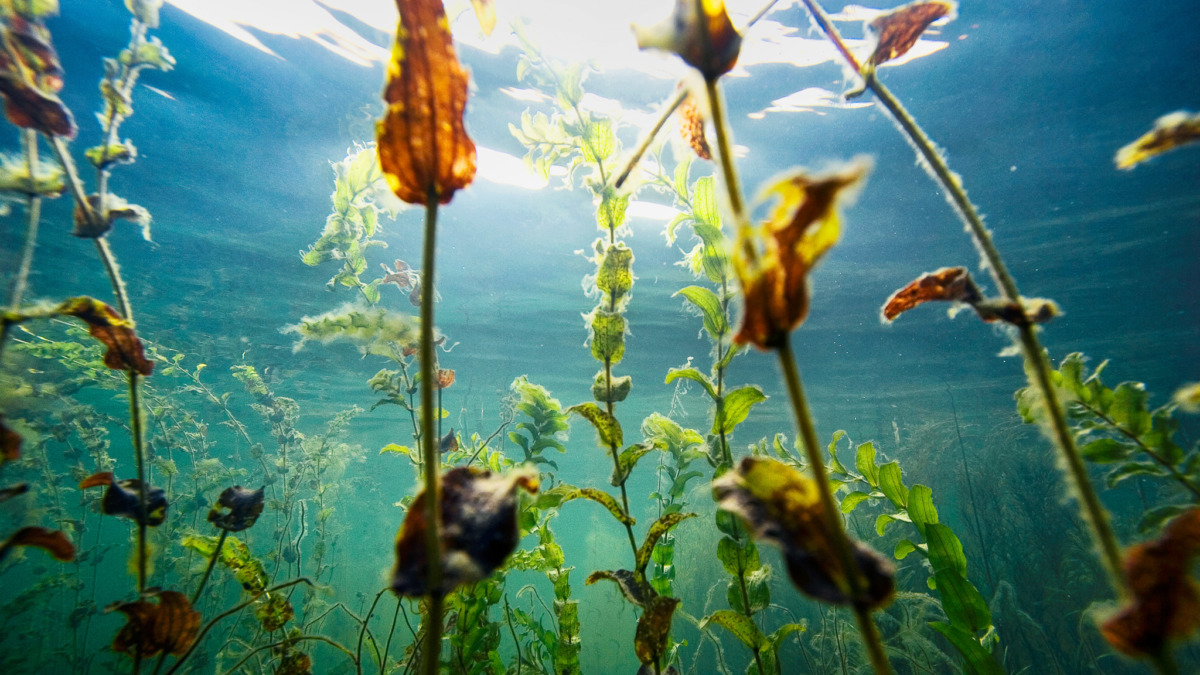
About Baltic Sea:
- It is a semi-enclosed inland sea located in Northern Europe.
- It is an arm of the North Atlantic Ocean, extending northward from the latitude of southern Denmark almost to the Arctic Circle and separating the Scandinavian Peninsula from the rest of continental Europe.
- It has a coastline of approximately 8,000 km, shared by several countries, including Sweden, Poland, Lithuania, Latvia, Finland, Estonia, Germany, Denmark, and Russia.
- It covers an area of approximately 377,000 sq.km. The sea is approximately 1,600 km long and 193 km wide.
- It is connected to the White Sea via the White Sea Canal and to the North Sea’s German Bight via the Kiel Canal.
- It connects to the Atlantic Ocean through the Danish Straits.
- The Baltic Sea contains three major gulfs: the Gulf of Bothnia to the north, the Gulf of Finland to the east, and the Gulf of Riga slightly to the south of that.
- It is often cited as the world’s largest brackish inland water body.
- Its water salinity levels are lower than that of the World Oceans due to the inflow of fresh water from the surrounding land and the sea’s shallowness.
- More than 250 rivers and streams empty their waters into the Baltic Sea. Neva is the largest river that drains into the Baltic Sea.
- Islands: It is home to over 20 islands and archipelagos. Gotland, located off the coast of Sweden, is the largest island in the Baltic Sea.
Section 125 of the Criminal Procedure Code (CrPC)
The Supreme Court recently decided to examine a plea on whether a divorced Muslim woman can seek maintenance under Section 125 of the Criminal Procedure Code.

About Section 125 of the Criminal Procedure Code (CrPC):
- It deals with the maintenance of wives, children, and parents.
- It is a legal provision that allows certain categories of individuals to claim financial support from their spouses or children, as the case may be, in the event they are unable to maintain themselves.
- Who Can Claim Maintenance?
- Wife: A wife who is unable to maintain herself can claim maintenance from her husband. The wife is entitled to maintenance if she is unable to support herself. The word “wife” refers to a woman who has been divorced or sought divorce from her spouse and has not remarried.
- Children: Children, whether legitimate or illegitimate, who are unable to maintain themselves and are below a certain age or mentally/physically disabled can claim maintenance from their parents.
- Parents: Under this, both father and mother are entitled to be maintained equally by son and daughter, but the court must be satisfied that the daughter has the means to support herself. Parents also include “Adoptive father” and “Adoptive mother.”
- To successfully claim maintenance under Section 125 CrPC, certain conditions must be met:
- Neglect or Refusal: The person seeking maintenance must demonstrate that the respondent (the person from whom maintenance is sought) has neglected or refused to provide financial support.
- Dependency: The claimant must establish their inability to maintain themselves and their dependency on the respondent for financial assistance.
- Sufficient Means: The person from whom maintenance is claimed must have sufficient means to maintain the person claiming.
- Quantum of Maintenance: The court will determine the amount of maintenance based on various factors like the income and financial capacity of the person liable to pay, the needs of the claimant, and other relevant circumstances. The objective is to ensure that the claimant gets a reasonable and fair amount for their maintenance.
- Duration: Maintenance can be awarded on a monthly basis, and the court can specify a duration for which it should be paid. It can be a temporary or permanent arrangement, depending on the circumstances.
- Enforcement: If the person ordered to pay maintenance does not comply with the court’s order, the person seeking maintenance can file an application for the enforcement of the order. The defaulter may face legal consequences for non-compliance.
- The wife is not entitled to receive an allowance from her husband in three cases,
- if she is living in adultery
- if she refuses to live with her husband and without any sufficient cause
- if they are living separately by mutual consent
Kaji Nemu
Recently, the Assam government declared the GI-tagged ‘Kaji Nemu’ (Citrus Limon) as the State Fruit.

About Kaji Nemu:
- It is elongated and oblong compared to other lemon varieties.
- It is popular for its unique aroma and health benefits. It has been traditionally associated with the Assamese cuisines.
- The fruit had been exported to several countries, including to the Middle East.
- With its unique aroma and antioxidant properties, the Assam lemon enriched the local cuisines.
- The oval-shaped Kaji Nemu is a lot juicier than other lemon varieties. Kaji Nemu is majorly used in culinary and commercial purposes, and it is extensively used for its medicinal properties.
- Cultivation: It is grown in almost all the districts of the state, is available throughout the year.
- The fruit is a powerhouse of nutrients, boosting health
- Assam has as many as 16 species and 52 varieties hybrids of citrus.
- Kaji Nemu’ (Citrus Limon) bears GI Geography Indication tag in 2019, is linked to Assamese food.
Electoral Bonds (EBs)
The Supreme Court recently directed the State Bank of India to stop issuing electoral bonds immediately.
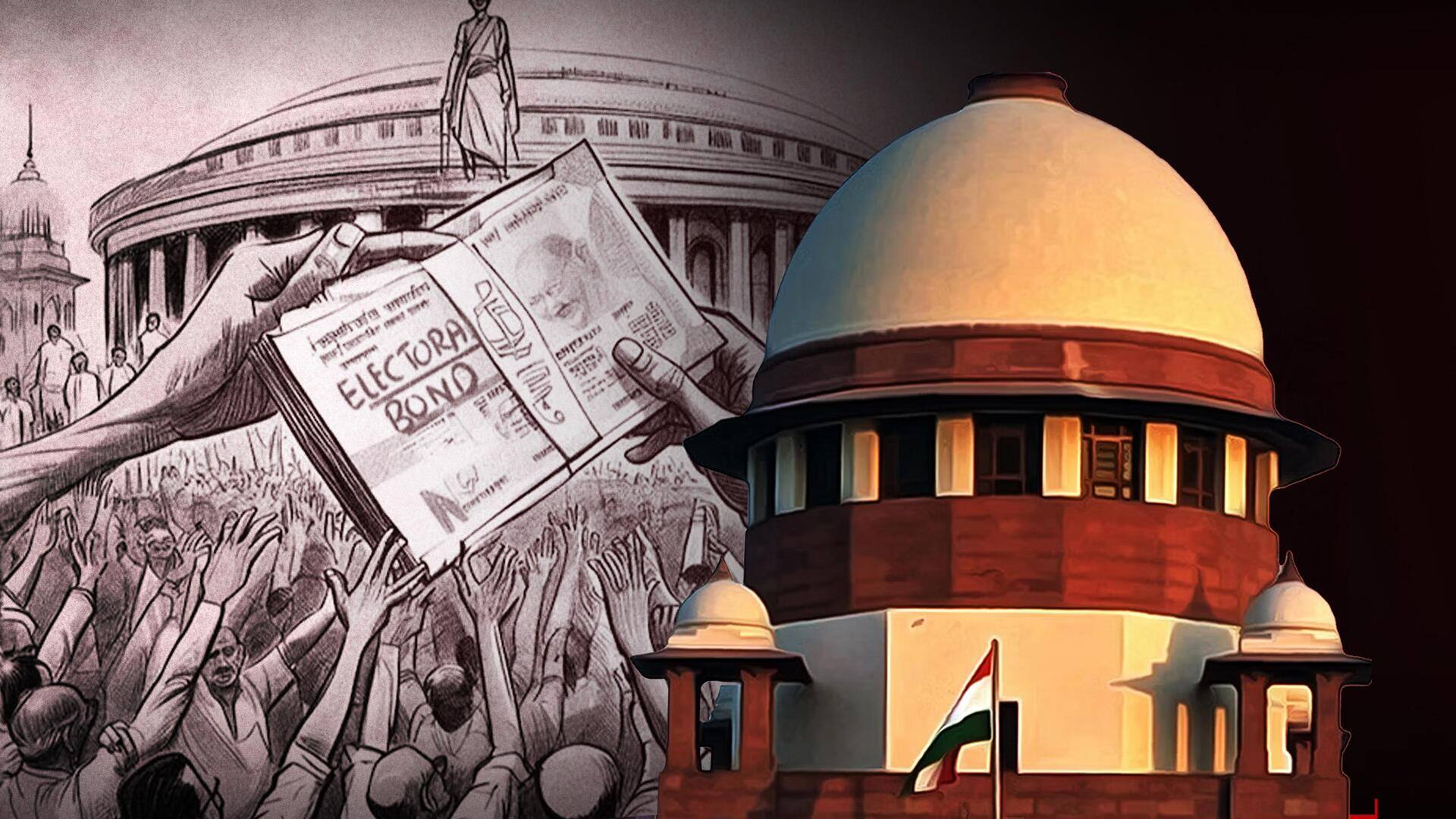
About Electoral Bonds (EBs):
- Electoral bonds are interest-free bearer bonds or money instruments that can be purchased by companies and individuals in India from authorised branches of the State Bank of India (SBI).
- The bonds are similar to bank notes that are payable to the bearer on demand and are free of interest.
- These bonds are sold in multiples of Rs 1,000, Rs 10,000, Rs 1 lakh, Rs 10 lakh, and Rs 1 crore.
- They can be purchased through a KYC-compliant account to make donations to a political party.
- EBs have a life of only 15 days during which it can be used for making donations to political parties.
- The name and other information of the donor are not entered on the instrument and thus electoral bonds are said to be anonymous.
- There is no cap on the number of electoral bonds that a person or company can purchase.
- Under the Income Tax act, one’s electoral bond donations are considered tax-exempt under Section 80 GG and Section 80 GGB.
- Who can receive funding via electoral bonds?
- Only political parties registered under Section 29A of the Representation of the People Act, 1951 and which secured not less than 1% of votes polledin the last general election to the House of the People or the Legislative Assembly of the State, are eligible to receive electoral bonds.
- The political parties have to encash them within a stipulated time.
- The bond can be encashed by an eligible political party only through a designated bank account with the authorized bank.
- The political parties have to disclose the amount to the Election Commission.
Mohammed Quli Qutb Shah’s tomb
Recently, a reality tech firm unveiled the digital twin of Mohammed Quli Qutb Shah’s tomb in Hyderabad.
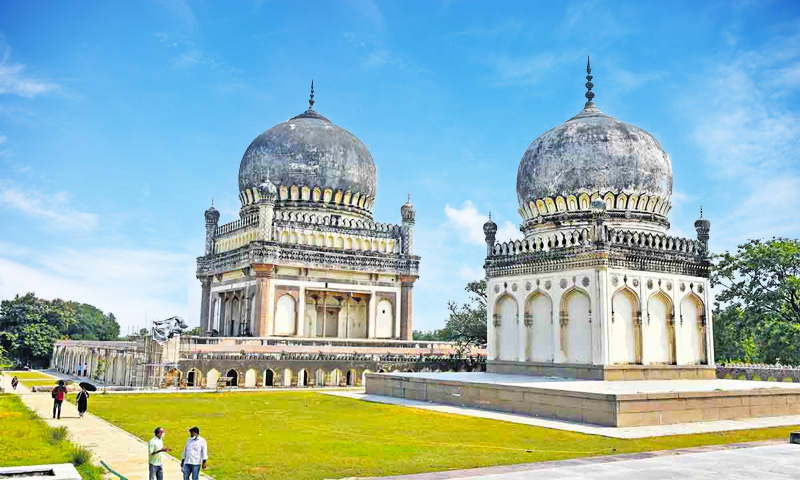
About Mohammed Quli Qutb Shah’s tomb:
- It is one the grandest monuments in the Qutb Shah’s tombs complex at the foothill of Golconda, Hyderabad.
- The majestic tomb built in 1602, is one of the largest tombs at the Qutb Shahi heritage park complex reaching to a total height of 60 m.
Who was Mohammed Quli Qutb Shah?
- He was the fifth king of the Qutb Shahi dynasty laid the foundation of Hyderabad.
- Shah who wrote in Persian, Telugu, and Deccani—a variant of Urdu–is justifiably the first poet in Deccani Urdu with at least fifty thousand shers to his credit.
- He wrote on a variety of issues concerning communal life and the sentiments of the common man, their festivals and faiths, love and the pleasures of union, in a frank and disarming manner.
- A contemporary of Tulsidas, he blended the best traditions of the two streams of thought and life to impart a new halo to his poetry.
Key facts about Qutub Shahi Tombs
- These are erected in the memory of the departed kings of Golconda.
- They are located one kilometer north of Golconda Fort’s called Banjara Darwaza.
- Built by the Qutub Shahis, these tombs are considered to be among the oldest historical monuments of Hyderabad.
- These tombs are present in a large group on a raised platform.
- Architectural style: They resemble Persian, Pathan and Hindu architectural styles that makes use of grey granite, with stucco ornamentation and is a one-of-its-kind place in the world where the whole dynasty is buried at a single spot.
What is a digital twin?
- It is a digital model of an object, system or a process that acts the same as its real world counterpart.
- It helps companies and organisations to understand a physical object or a process well.
Cassini Spacecraft
Recent findings from data collected by NASA’s Cassini spacecraft reveal the presence of a vast ocean beneath the icy surface of Saturn’s moon Mimas.

About Cassini Spacecraft:
- Cassini-Huygens was a joint NASA/European Space Agency (ESA)/Italian Space Agency (ASI) space mission to Saturn.
- It was launched on October 15, 1997.
- The mission consisted of NASA’s Cassini orbiter, which was the first space probe to orbit Saturn, and the ESA’s Huygens probe, which landed on Titan, Saturn’s largest moon.
- Spacecraft:
- It was one of the largest interplanetary spacecraft.
- The Cassini orbiter weighed 2,125 kg (4,685 pounds) and was 6.7 metres (22 feet) long and 4 metres (13 feet) wide.
- The instruments on board Cassini included radar to map the cloud-covered surface of Titan and a magnetometer to study Saturn’s magnetic field.
- The disk-shaped Huygens probe was mounted on the side of Cassini. It weighed 349 kg (769 pounds), was 2.7 metres (8.9 feet) across, and carried six instruments designed to study the atmosphere and surface of Titan.
- Highlights:
- It orbited Saturn from 2004 to 2017, circling the planet 294 times and teaching us almost everything we know about Saturn.
- It measured the structure of Saturn’s atmosphere and rings, as well as how they interact with the planet’s moons.
- It also discovered six named moons and revealed Enceladus and Titan as promising locations to search for extraterrestrial life.
Key Facts about Mimas:
- It is the smallest and innermost of the major regular moons of Saturn.
- The surface is icy and heavily cratered.
- The most striking feature of this small moon is a gigantic crater known as Herschel. This crater measures 80 miles (130 km) across.
- A central peak in the center of the crater rises to a height of 4 miles, almost as high as Mount Everest on Earth.
- Herschel is one of the largest impact structures, relative to the size of the body, known in the solar system.
- The low density of Mimas indicates that it is composed almost entirely of water ice.
Advanced Chemistry Cell
Recently, the Ministry of Heavy Industries successfully convened a pre-bid meeting in New Delhi, laying the foundation for the second round under the Production Linked Incentive (PLI) scheme for Advanced Chemistry Cells (ACC) for cumulative 10 GWh PLI ACC capacity.
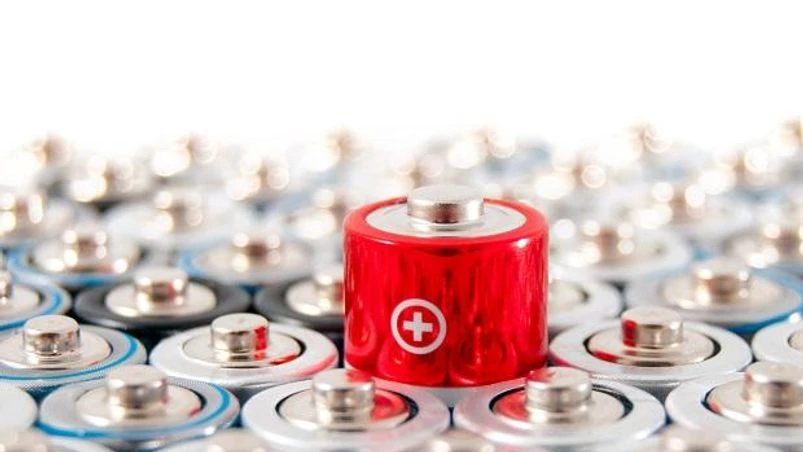)
About Advanced Chemistry Cell:
- These are the new generation technologies that can store electric energy either as electrochemical or as chemical energy and convert it back to electric energy as and when required.
Key facts about PLI scheme for Advanced Chemistry Cells
- The scheme is called National Programme on Advanced Chemistry Cell (ACC) Battery Storage.
- The Indian government aims to promote the manufacturing of technology-agnostic ACCs within the country, aligning with its commitment to fostering innovation and self-reliance in the renewable energy sector.
- The scheme envisages setting up of a cumulative ACC manufacturing capacity of fifty (50) GWh for ACCs and an additional cumulative capacity of (5) GWh for Niche ACC Technologies.
- The manufacturing facility as proposed by the beneficiary firm would have to be commissioned within a period of 2 years.
- The subsidy will be disbursed thereafter over a period of 5 years.
- The beneficiary has to ensure achieving a domestic value addition of at-least 25% and incur the mandatory investment (₹ 225 crore /GWh) within 2 Years (at the Mother Unit Level) and raise it to 60% domestic value addition within 5 Years, either at Mother Unit, in-case of an Integrated Unit, or at the Project Level, in-case of “Hub & Spoke” structure.
- Nodal Ministry: Ministry of Heavy Industries
Pallava Dynasty
Archaeologists recently discovered an eighth-century Kotravai sculpture, an artifact that dates back to the Pallava period, near Ulundurpet, Tamil Nadu.

About Pallava Dynasty:
- The Pallava Dynasty was a famous power in South India that existed between the 3rd and 9th Centuries.
- They ruled the northern parts of Tamil Nadu, parts of Karnataka, Andhra Pradesh, and Telangana, with Kanchipuram as their capital.
- The Pallavas supported Buddhism, Jainism, and the Brahminical faith and were patrons of music, painting, and literature.
- Origin:
- Pallava Dynasty was earlier feudatories of Andhra Satavahanas. Pallavas grew to be autonomous subsequent to their decline at Amaravati.
- They progressively moved southward and instituted their capital at Kanchipuram in the 4th century CE.
- The rule of Mahendravarman I(571 – 630 CE) and Narasimhavarman I (630 – 668 CE) witnessed the augment in the wealth and vigour of the Pallava realm.
- Chinese traveler Hiuen Tsang portrays Bodhidharma, the founder of the Chan (Zen) school of Buddhism in China, as a prince of the Pallava empire. Tsang traveled to Kanchipuram during the Pallava era and praised their benevolent decrees.
- Architecture:
- The Pallava Dynasty was typically distinguished for their benefaction of Dravidian architecture.
- They were the most noted for temple architecture. They were instrumental in the transition from rock-cut architecture to stone temples.
- The most noted architectural accomplishments of the Pallavas are at Mahabalipuram, which, under the Pallava reign, became an important centre of art, architecture, and literature.
- The Kailasanatha Temple in Kanchipuram and the Shore Temple were built by Narasimhavarman II.
- Of all the temples, Kailasanatha and Vaikuntaperumal are best known for their architectural virtues.
- The Vaikuntaperumal shrine is a multi-storied temple built in the 8th century A.D and is acknowledged for the sculptures illustrating the history of the Pallavas.
- Religion: They adopted the local religion Shaivism, and became Dravidians.
- Combats of the Pallava Dynasty:
- Throughout their supremacy, they were in steady conflict with both the Chalukya Dynasty in the north and the Tamil kingdoms of Chola and Pandyas in the south.
- The Pallavas were occupied in continuous combat with the Chalukyas of Badami and lastly concealed by the Chola kings in the 8th century CE.
- Decline:
- The rise of Rashtrakutas had seen the decline of the Pallava Dynasty.
- Vijayalaya, the Chola King, completely overpowered Aparajitavarman, the last Pallava King, in 897 AD.
UN World Restoration Flagships
The United Nations named seven initiatives from across Africa, Latin America, the Mediterranean and Southeast Asia as the intergovernmental organisation’s World Restoration Flagships.
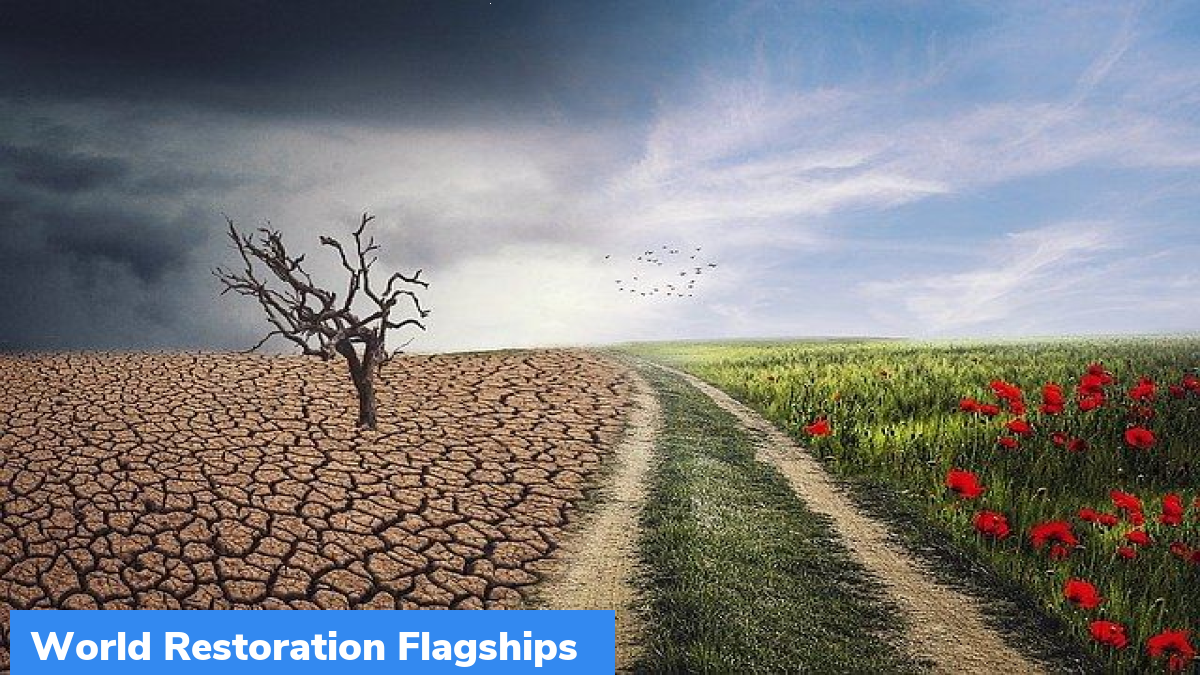
About UN World Restoration Flagships:
- The World Restoration Flagship are part of the UN Decade on Ecosystem Restoration – led by the UN Environment Programme (UNEP) and the Food and Agriculture Organization.
- It aims to prevent, halt, and reverse the degradation of ecosystems on every continent and in every ocean.
- The award conferred by the UNEP and FAO of the UN makes the initiatives eligible for technical and financial support from the organisation.
- The awards track notable initiatives that provide support to global commitments in order to restore one billion hectares.
- The seven initiatives are
- The Restoring Mediterranean Forests Initiative: It involves the countries of Lebanon, Morocco, Tunisia and Türkiye.
- It consists of a novel approach said to have protected and restored natural habitats and vulnerable ecosystems. It is also said to have led to around two million hectares of forests restored across the region since 2017.
- The Living Indus initiative received approval from the Pakistan parliament in the wake of the devastating 2022 climate change-induced floods.
- Its official launch took place at the 27th Conference of Parties to the UN Framework Convention on Climate Change in Sharm el-Sheikh.
- It designates the Indus River as a living entity with rights — a measure taken to protect rivers elsewhere as well.
- The Acción Andina social movement led by Peruvian conservation non-profit ECOAN aims to protect and restore a forest area of one million hectares.
- The Sri Lanka Mangrove Regeneration initiative: It is a science-driven programme co-led by local communities. It focuses on the restoration of natural balance in the ecosystem
- The Terai Arc Landscape initiative: It is aimed to restore the forests of critical corridors of the Terai Arc Landscape in collaboration with local communities working as citizen scientists, community-based anti-poaching units, forest guards, among others.
- “It also supported the tiger population in the landscape shared by India and Nepal, which increased today to 1,174.
- Regreening Africa’s agriculture: It is expected to benefit over 6,00,000 households.
- Growing forests in Africa’s drylands initiative: It aims to expand from 41,000 restored hectares today to 229,000 hectares by 2030.
Bharat Ratna Awardees 2024
The prestigious Bharat Ratna, India’s highest civilian honour, is set to be conferred upon five eminent personalities who have made remarkable contributions to politics, governance, and agriculture. They are Karpoori Thakur, Mankombu Sambasivan (MS) Swaminathan, Pamulaparthi Venkata (P. V.) Narasimha Rao, Lal Krishna Advani, and Chaudhary Charan Singh.

What are the Notable Contributions of Bharat Ratna Awardees (2024)?
- Karpoori Thakur:
- Karpoori Thakur, known as “Jan Nayak,” served as Bihar’s 11th Chief Minister twice, from 1970-71 and 1977-79. He will be conferred the Bharat Ratna posthumously.
- Karpoori Thakur was the pioneer in providing the Other Backward Classes (OBCs) with the benefit of reservation as he implemented the recommendations of the Mungeri Lal Commission during his tenure as Bihar CM from 1977 to 1979.
- In 1978, he introduced a groundbreaking reservation model, allocating 26% of reservations with specific quotas for OBCs, Economically Backward Classes (EBCs), women, and economically backward classes among upper castes.
- Thakur advocated for marginalised communities’ rights, emphasising social justice and inclusive development.

- Mankombu Sambasivan (MS) Swaminathan:
- MS Swaminathan, the ‘Father of India’s Green Revolution,’ helped India become self-reliant in agriculture and modernised it. He will be conferred the Bharat Ratna posthumously.
- Developed high-yielding wheat and rice varieties with Norman Borlaug, revolutionising agriculture in India in the 1960s and ’70s.
- He Advocated for fair prices for agricultural produce and sustainable farming practices, leading the National Commission of Farmers.
- He played a pivotal role in developing the Protection of Plant Varieties and Farmers’ Right Act, 2001.
- Swaminathan received numerous prestigious awards, including the Shanti Swarup Bhatnagar Award in 1961, the Ramon Magsaysay Award in 1971, and the Albert Einstein World Science Award in 1986.
- Recognised with the Padma Shri (1967), Padma Bhushan (1972) Padma Vibhushan (1989).
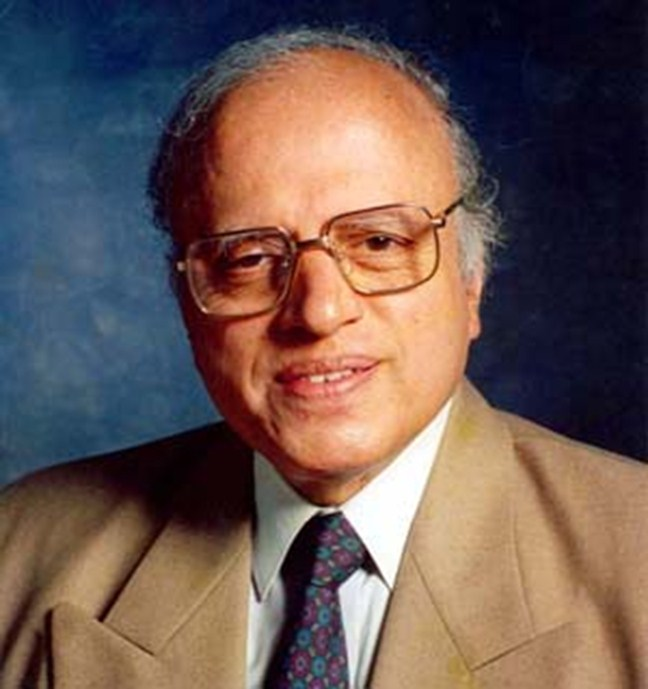
- Pamulaparthi Venkata (P. V.) Narasimha Rao:
- P. V. Narasimha Rao served as the 9th Prime Minister of India from 1991 to 1996, he will be conferred the Bharat Ratna posthumously.
- As Prime Minister, P.V. Narasimha Rao reset India’s foreign policy, improving ties with the United States and establishing relations with Israel.
- He maintained national independence by refusing to give up India’s right to pursue its nuclear strategy.
- Rao’s tenure left behind a polity more confident, with India on a path of economic liberalization and resurgence, following the LPG reforms of 1991 that opened up the economy to globalisation, reduced trade barriers, and initiated privatisation in various sectors.
- He published ‘SahasraPhan’, a Hindi translation of the famous Telugu Novel ‘Veyi Padagalu’.
- The 73rd and 74th Constitutional Amendments Acts were enacted during the tenure of P.V. Narasimha Rao.
- The 73rd and 74th Amendment Acts mandate the reservation of one-third of seats for women in Panchayati Raj institutions and urban local bodies (ULBs).

- Lal Krishna Advani:
- Advani through the years has served as the 7th Deputy Prime Minister of India (1999-2004) and as the President of the Bharatiya Janata Party for the longest period since its inception in 1980.
- Advani is widely regarded as an individual of great intellectual ability, strong principles, and unwavering support for the idea of a strong and prosperous India.

- Chaudhary Charan Singh:
- Chaudhary Charan Singh was an Indian politician and a freedom fighter. He served as the 5th prime minister of India and former Chief Minister of Uttar Pradesh.
- In 1952, as agriculture minister, he led Uttar Pradesh in abolishing the zamindari system.
- He advocated for the interests and rights of the peasants and introduced several measures to improve their conditions and welfare. He also promoted the values of democracy, secularism, and social justice.
- Charan Singh followed Mahatma Gandhi in a non-violent struggle for independence from the British Government and was imprisoned several times.
- Chaudhary Charan Singh was an Indian politician and a freedom fighter. He served as the 5th prime minister of India and former Chief Minister of Uttar Pradesh.

Note
- The rule of maximum three awards in a year is a guideline for the Bharat Ratna. The rule was broken for the first time in 1999, when four recipients were conferred the award: Jayaprakash Narayan, Amartya Sen, Gopinath Bordoloi, and Ravi Shankar.
- The rule was broken again in 2024, when five recipients were conferred the award.
UPI Services in Sri Lanka and Mauritius
Recently, the Prime Minister of India along with the President of Sri Lanka, Mr Ranil Wickremesinghe and the Prime Minister of Mauritius, Mr Pravind Jugnauth jointly inaugurated the launch of Unified Payment Interface (UPI) services in Sri Lanka and Mauritius, and also RuPay card services in Mauritius.
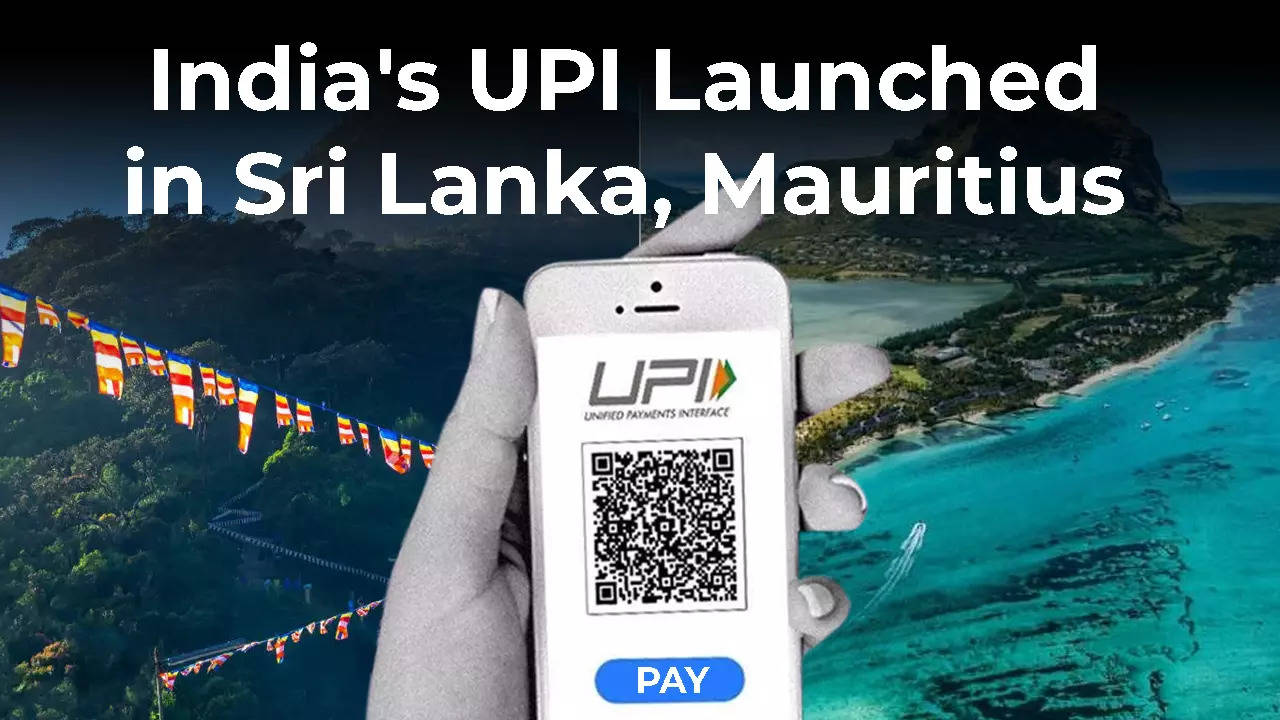
- This move aims to facilitate seamless digital payments among citizens of the three countries, fostering stronger economic ties.
- These projects have been developed and executed by NPCI International Payments Ltd (NIPL), along with partner banks/non-banks from Mauritius and Sri Lanka, under the guidance and support of the Reserve Bank of India.
What are RuPay and UPI?
- RuPay:
- RuPay is a payment system and financial services product developed by the National Payments Corporation of India (NPCI).
- It is a domestic card payment network that can be used at automated teller machines (ATMs), point of sale (POS) devices, and e-commerce websites across India.
- The provision under the Payment and Settlement Systems Act, 2007, empowered the Reserve Bank of India (RBI) and the Indian Banks’ Association (IBA) to create a secure electronic payment and settlement system in India.
- RuPay has launched various card variants catering to the different segments of society.
- In addition to the Government scheme cards, RuPay Classic, Platinum & Select variant cards are designed for the masses and affluent customers.
- After Nepal, Bhutan, Singapore and UAE, the RuPay card is now available in Africa through Mauritius, the first non-Asian country to issue it.
- The use of RuPay technology will allow banks in Mauritius to issue RuPay cards locally through the Mauritius Central Automated Switch (MauCAS) card network.
- MauCAS is a novel state-of-the-art digital hub fully owned and operated by the Bank of Mauritius for routing payments among operators.
- The use of RuPay technology will allow banks in Mauritius to issue RuPay cards locally through the Mauritius Central Automated Switch (MauCAS) card network.
- UPI:
- The UPI is a digital and real-time payment system developed by the NPCI in 2016.
- UPI is built over the IMPS (Immediate Payment Service) infrastructure and allows users to instantly transfer money between any two parties’ bank accounts.
- UPI allows merging several banking features, seamless fund routing, and merchant payments into one mobile application.
- More than 100 billion transactions took place via UPI in 2023 worth Rs 2 lakh crores.
- The countries that accept UPI payments are France, UAE, Mauritius, Sri Lanka, Singapore, Bhutan, and Nepal.

How will RuPay and UPI Benefit the Users in Mauritius and Sri Lanka?
- Facilitating Seamless Transactions:
- Users in Mauritius and Sri Lanka will experience convenience in making transactions, both domestically and internationally, through the adoption of RuPay and UPI.
- With RuPay cards and UPI connectivity, individuals travelling between India, Mauritius, and Sri Lanka can conduct transactions seamlessly, eliminating the need for currency exchange and reducing transactional complexities.
- Users in Mauritius and Sri Lanka will experience convenience in making transactions, both domestically and internationally, through the adoption of RuPay and UPI.
- Enhanced Financial Access:
- RuPay cards will be accepted at ATMs and PoS terminals in Mauritius, expanding the accessibility of digital payments for users in the region.
- UPI connectivity in Sri Lanka enables users to make QR code-based payments at merchant locations, providing a convenient alternative to traditional payment methods.
- Promotion of Financial Inclusion:
- The availability of RuPay cards and UPI services empowers individuals from diverse socio-economic backgrounds to participate in the digital economy, fostering financial inclusion.
- UPI transactions offer a cost-effective solution for users, reducing the expenses associated with traditional banking services and facilitating affordable financial transactions.
- Strengthened Economic Ties:
- Seamless payment solutions contribute to the growth of trade and tourism between India, Mauritius, and Sri Lanka, fostering economic cooperation and collaboration.
- Increased digital transactions support local businesses by promoting cashless transactions, enhancing transparency, and reducing reliance on cash-based transactions.
- The launch of UPI and RuPay services will also strengthen the economic and strategic ties between the three countries, as part of India’s “neighbourhood first” policy and “SAGAR” (Security and Growth for All in the Region) vision.
- Seamless payment solutions contribute to the growth of trade and tourism between India, Mauritius, and Sri Lanka, fostering economic cooperation and collaboration.
- Innovation and Technological Advancement:
- The introduction of RuPay and UPI reflects a commitment to embracing digital innovation, positioning Mauritius and Sri Lanka as progressive economies in the global digital landscape.
- By leveraging advanced payment technologies, users gain access to innovative financial solutions that empower them to manage their finances more efficiently and securely.
- The introduction of RuPay and UPI reflects a commitment to embracing digital innovation, positioning Mauritius and Sri Lanka as progressive economies in the global digital landscape.
India’s Digital Public Infrastructure (DPI)
- India’s DPI also known as the India Stack, is a set of open and interoperable platforms yet independent “blocks” that provide identity, payment, data sharing, and consent mechanisms for various digital applications.
- These platforms are built on the principles of user-centric design, policy objectives, developing use cases, and engagement.
- Some of the key components of India’s DPI are Aadhaar, DigiYatra, DigiLocker, and Account Aggregator (AA).
- The DPI holds the promise of driving economic transformation and fostering inclusive growth. The modular layers of India Stack create opportunities for innovation, inclusion, and competition in the digital realm.